- Data Basin |
- Datasets |
- Physiographic Areas Subdivisions
Physiographic Areas Subdivisions
Jun 1, 2015
(Last modified Jun 13, 2015)
Uploaded by
Rensselaer Plateau Alliance
Dataset was reviewed in another manner
- Description:
- Boundary of Level-3 subdivisions of the Rensselaer Plateau region as physiographic units. Physiography represents the study of landforms at regional levels, usually addressing combined patterns of topography, geology, soils, and dominant vegetation types. Level-3 subdivisions of the Rensselaer Plateau, one of multiple minor subdivision types, include 8 minor escarpments of the Rensselaer Plateau Escarpment subregion and 2 floristic zones of the Central Rensselaer Plateau subregion, all roughly reflecting different Northern Appalachian versus Central Appalachian forest zones. The minor escarpments, like Level-2 (major) escarpments but at finer scales, are divided and delineated based on slope aspect (direction), steepness (degree slope), erosion patterns, landforms (e.g., hollows), and roughly correlated floristic patterns (e.g., forest types). The two forest zones of the Central Plateau seem best distinguished by community types, then secondarily by topography (especially elevation). The Central Plateau was generally not divided any further than its Level-2 floristic types (Hemlock-Beech Matrix and Spruce-Fir Core), although it may have additional distinct Level-3 subdivisions comparable to those of the Rensselaer Plateau Escarpment.
- Data Provided By:
-
Conceptualization: Rensselaer Plateau Ecological
Features Working Group (David M. Hunt, Ecological Intuition & Medicine,
with review by Nick Conrad, Rensselaer Land Trust and New York Natural Heritage
Program, and Rachel Riemann, United States Forest Service).
Delineation & Digitization: David M. Hunt, Ecological Intuition & Medicine.
Attribute Population: David M. Hunt, Ecological Intuition & Medicine.
- Content date:
- 100,000s of years (past to future). stable, long-term, geologically-based features
- Citation:
- Hunt, David M. 2013. Level-3 Physiographic Subdivisions of the Rensselaer Plateau. ArcGIS datalayer. prepared for the Rensselaer Plateau Alliance and New York State Department of Environmental Conservation Hudson River Estuary Program. Ecological Intuition & Medicine.
- Spatial Resolution:
- variable. derived from other features ranging from about 1:8000 scale (ecological communities) to 1:250,000 scale (bedrock geology). individual boundary segments drawn at about 1:1,000 scale.
- Contact Organization:
- Rensselaer Plateau Alliance (RPA), http://www.rensselaerplateau.org. For technical information, contact: Rachel Riemann (rriemann2@icloud.com) or Sarah Parks (sparks @ amalaconsulting.com); For content questions, contact David Hunt (518-279-4124).
- Contact Person(s):
- Use Constraints:
 This work is licensed under a Creative Commons Attribution 3.0 License.
This work is licensed under a Creative Commons Attribution 3.0 License.
- Layer:
- Layer Type:
- Currently Visible Layer:
- All Layer Options:
- Layers in this dataset are based on combinations of the following options. You may choose from these options to select a specific layer on the map page.
- Description:
- Spatial Resolution:
- Credits:
- Citation:
- Purpose:
- Methods:
- References:
- Other Information:
- Time Period:
- Layer Accuracy:
- Attribute Accuracy:
FGDC Standard Metadata XML
Click here to see the full FGDC XML file that was created in Data Basin for this layer.
Original Metadata XML
Click here to see the full XML file that was originally uploaded with this layer.
This dataset is visible to everyone
- Dataset Type:
-
Layer Package
Downloaded by
4 Members
Included in
2 Public Maps
Included in
1 Public Gallery
About the Uploader

Rensselaer Plateau Alliance
Environmental Non-Profit
The Rensselaer Plateau Alliance (RPA), established in 2008, is a diverse group of organizations and people who want to conserve and protect the forested character of the Rensselaer Plateau and the many economic and environmental benefits it provides. A grassroots organization, the RPA is people...


